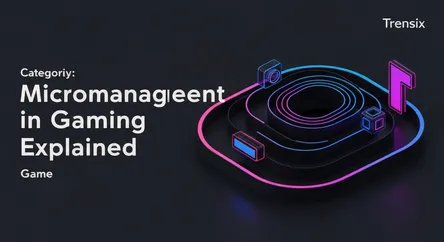Game
Micromanagement in Gaming Explained

Discover micromanagement, the gaming art of controlling individual units to gain a competitive edge in real-time strategy and other genres.
What is it?
Micromanagement, often called "micro," is a gameplay mechanic that involves the fine-tuned control of individual units or small groups to maximize their effectiveness. It stands in contrast to macromanagement, which focuses on the broader aspects of strategy like economy and production. In games like StarCraft or Age of Empires, this could mean positioning archers to avoid damage while attacking (kiting) or using a spellcaster's ability at the perfect moment. It requires high precision, quick reflexes, and a deep understanding of unit interactions, often measured by a player's Actions Per Minute (APM).
Why is it trending?
The concept of micromanagement is central to the appeal of competitive esports. The rise of streaming platforms has showcased the incredible skill of professional players, whose flawless micro turns battles and wins tournaments. Games in the Real-Time Strategy (RTS) and Multiplayer Online Battle Arena (MOBA) genres continue to thrive, with developers designing complex units that reward precise control. This creates a high skill ceiling that keeps players engaged and provides spectacular moments for viewers, ensuring micro remains a hot topic in competitive gaming communities.
How does it affect people?
For players, mastering micromanagement is a source of immense satisfaction and a clear path to improvement. It creates a significant skill gap, where a smaller, better-controlled army can defeat a larger, poorly managed one. However, it can also be a major source of stress and a barrier to entry for newcomers, who may feel overwhelmed by the demand for intense focus and rapid clicking. For some, the mental challenge is exhilarating, while for others, it can make certain game genres feel inaccessible or too demanding to be fun.